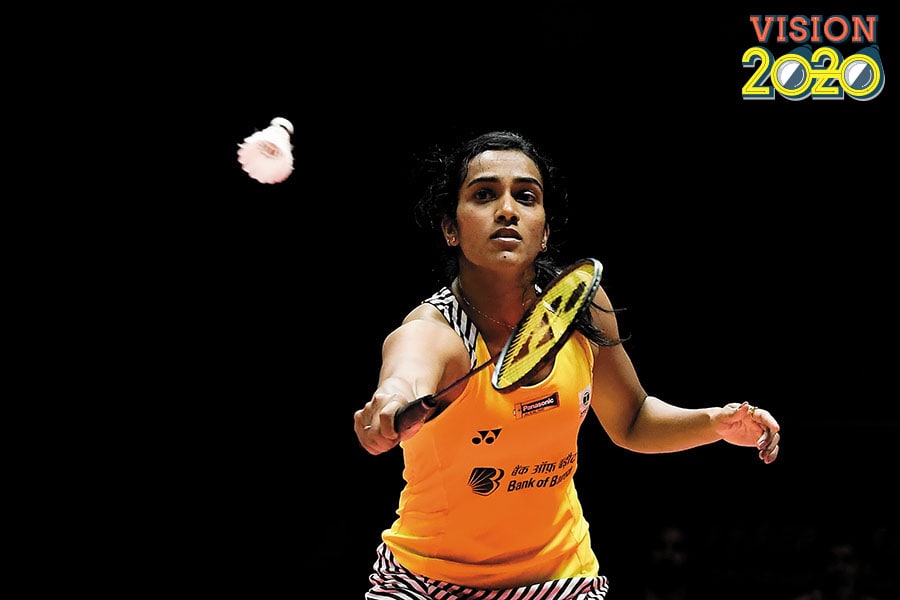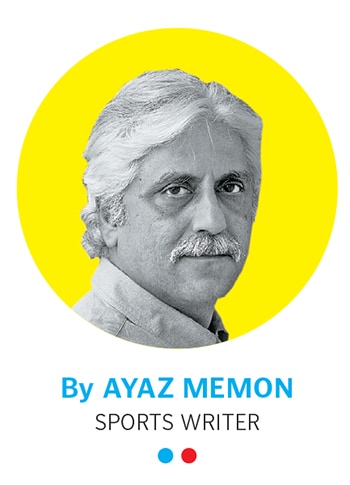'2010s defined by Indian women sportspersons': Ayaz Memon
India's sporting glory is not limited to cricket anymore; its growth story lies in the success of its boxers, shooters, wrestlers and shuttlers who are now role models for youngsters


 PV Sindhu, who won an Olympic medal and made multiple podium finishes at the World Championships, is one of the success stories of the decade
PV Sindhu, who won an Olympic medal and made multiple podium finishes at the World Championships, is one of the success stories of the decade
Image: Zhe Ji / Getty Images[br] The past decade has been the most rewarding in the history of Indian sports. More medals, titles and accolades accrued than ever before in a 10-year period. That this has come across a wide range of disciplines is the most heartening feature in a country otherwise so dependent on one sport— cricket—for sporting glory. Since I’ve introduced cricket in the opening paragraph itself, let me take stock first up of how India’s fared in a sport that remains so deeply implanted on the national psyche, and also what the road ahead portends.
Since I’ve introduced cricket in the opening paragraph itself, let me take stock first up of how India’s fared in a sport that remains so deeply implanted on the national psyche, and also what the road ahead portends.
The start of the decade (2010) saw India at No 1 in ICC’s Test ranking. In 2011, Mahendra Singh Dhoni’s team won the 50-over World Cup. At this juncture, India was rated the world’s best side across formats.
As the sun sets on the decade, this rating hasn’t changed. India are No 1 in Tests currently—indeed have been for a longish while now—and only a whit behind in ODIs. The T20 format is hugely volatile for any team to show consistency in ranking, but consensus is that Virat Kohli’s team is the world’s best across all three formats.
There have been upheavals and defeats along the way from 2010, some despairingly so, particularly immediately after the World Cup triumph when India were whitewashed in England and Australia in Test matches.
But the depth of talent in the country and the ambition of young cricketers—in men and women sections—that are coming through the system enabled speedy recovery. The women’s team reaching the final of the ICC World Cup in 2017 has been a standout feature of the decade.
Where Kohli & Co have been found wanting is the inability to win ICC events. In the 2015 and 2019 ODI World Cups and the 2016 T20 World Championship, India lost in the semi-finals. There has been no success in the Champions Trophy either since 2013. With the T20 World Championship coming up in 2020, Kohli will surely be yearning to change the script.
India’s excellence at cricket, however, shouldn’t surprise us. The cricket establishment is the richest in the world, with the widest captive audience, the best facilities and the largest number of registered players. It would be a travesty if India was struggling despite all these advantages.
"2020 filled with anticipation for Indian sport": Gaurav Kalra
This brings me to other disciplines, which is where the story of growth in Indian sport is located. The most striking index for this is the Olympics, where India’s record till the turn of the century was so poor that it was the butt of despairing jokes.
At London in 2012, India won an unprecedented six medals. This was a 100 percent improvement over the Beijing Games four years earlier. More remarkable was the varied disciplines in which the medals came: Boxing, shooting, wrestling and badminton.
True, unlike in Beijing where shooter Abhinav Bindra created history in becoming the first ever individual Olympic gold medallist, there was no India in the top slot on the podium in London. But two silver and four bronze medals was rich bounty for a medal-deprived nation.
Boxing, shooting, wrestling and badminton—for both men and women—were to become the mainstay in India’s sporting growth in this decade. This showed lateral expansion because apart from wrestling—that too only men’s—India was hardly renowned in the other disciplines. Though the Rio Olympics were a comedown where medals are concerned (only two), Indian athletes in these disciplines have featured regularly among the top in other major tournaments viz Asian and Commonwealth Games and World Championships.
Some have acquired iconic status. MC Mary Kom, bronze medallist at the London Games, is now the only female boxer to win a medal in every World Championship. In fact, she is the only boxer in any gender to win eight World Championship medals and has inspired a legion of young girls across the country to take to this high-risk sport.
Likewise, the rise of women wrestlers, led by the Phogat family that inspired the blockbuster Dangal, has been a fascinating saga, rich in pathos and achievement. Wrestling, like boxing, was a male preserve in the country. Who would have thought this would throw up champions?
India’s rise in badminton in this decade also makes for a wonderful story. In Prakash Padukone and P Gopichand, the country had two former All England champions. But there has never been such a proliferation of exceptional talent. Saina Nehwal and PV Sindhu (both Olympic medallists, with the latter also winning the World Championship) are beacons of hope for aspiring youngsters. India is now the most serious challenger to China’s hegemony in badminton.
In racket sports, there is a cluster of young table tennis youngsters—led by Monica Batra—who is making its mark internationally. In tennis, though, there seems to be a level of stagnation. There is evidence of exciting talent at junior levels to succeed the likes of Sania Mirza, Leander Paes and Mahesh Bhupathi. Indian tennis needs a big boost of support—and less internecine politics—to actualise this talent.
Track and field was an area where India lagged seriously behind the world. While Olympic medals still seem distant, there has been remarkbale progress, leading to a plethora of medals at the Asian and Commonwealth levels. Athletes like Hima Das and Dutee Chand could become torchbearers for Olympic champions among future generations, but here again, the federation has to show strong vision.
Competition in the 2010s led to better car technology": Maruti"s RC Bhargava
Chess is thriving too in India. Viswanathan Anand may not be top of the pops, but has been the lodestar to countless boys and girls to take to this sport. More Indians feature in the top 100 (men and women) in ILO rankings than ever before, breaking the stranglehold of Russia and other countries of erstwhile USSR.
One sport that caught everybody by surprise is kabaddi. Long thought as a discipline that would attract only rural players and audiences, kabaddi is now among the most valued sports properties in the country, showing what imaginative marketing can achieve.
The big disappointment has been in field sports apart from cricket. India’s struggles in hockey and football continue, though there are indications of the respective federations now waking up to the challenge.
Overall, performances of the last 10 years hold out promise of bigger and better achievements. It would, however, be presumptuous and premature to believe that India has transformed into a true sporting nation. For that, a great deal more work has to be put in both at the grassroots and elite levels. But what’s clear is that the talent exists. It needs to be tapped and nurtured.
Most pertinent in this aspect is to see how well women have fared across sports. My belief is that if only the girl child is encouraged to participate in sport aggressively is this transformation likely. You can’t keep 50 percent of the country’s population out and expect to become a sporting nation.
First Published: Jan 11, 2020, 07:16
Subscribe Now